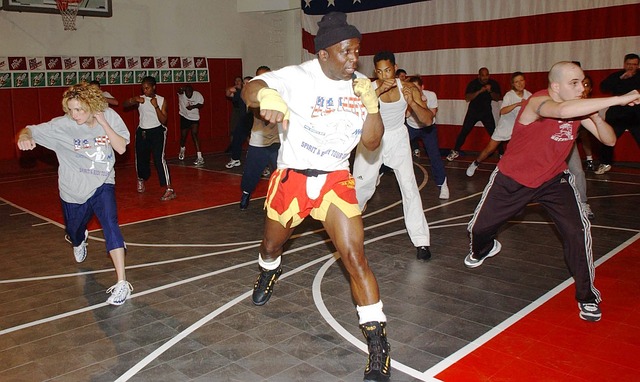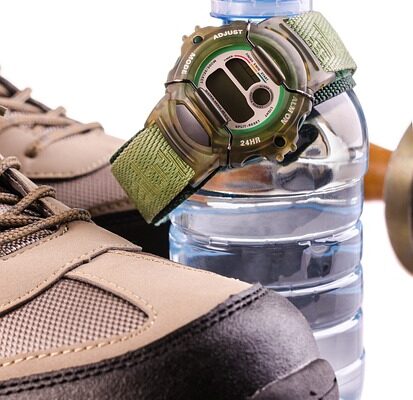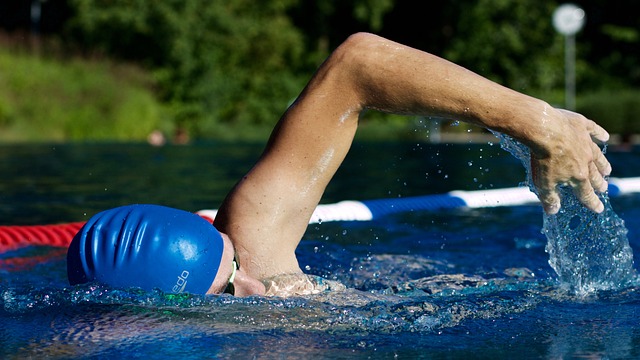Aerobic exercise is any physical activity that causes your breathing and heart rate to increase in order to provide your body with oxygen-rich blood.
Aerobic exercise strengthens the heart muscle, improves lung function, and promotes circulation and blood flow throughout the body.
Cardiovascular conditioning is provided by aerobic or “with oxygen” workouts. The American Heart Association suggests 30 minutes of cardiovascular exercise five to seven days a week. Warmup, cooldown, and stretching activities should all be included in your aerobic exercise session.
This article will explain the benefits of aerobic exercise, provide examples, and explain how to get started.
Advantages of Aerobic Exercise
- Promotes cardiovascular fitness.
- Reduces the risk of heart disease.
- Reduces blood pressure.
- Improves HDL (the “good” cholesterol).
- Aids in blood sugar management.
- Helps with weight management and/or loss.
- Enhances lung function.
- Reduces resting heart rate.

14 aerobic exercise examples
Aerobics (or cardio) can be done in almost any place and with minimal or no equipment. Warm up before doing any form of training to avoid injury.
Strive for 150 minutes per week of moderate-intensity aerobic activity (meaning you can talk while working) or 75 minutes of strenuous exercise.
Here are some aerobic exercise examples to get you started.
Aerobic exercise at home
Running
Shoes are required.
- How to Go About It: If you’re new to running, start slowly and alternate between walking and jogging for 1 minute at a time – and don’t forget to stretch and cool down!
- Begin with shorter workouts a couple of times each week, gradually increasing the duration as you gain strength.
Length and frequency: 20-60 minutes, twice a week.
Walking
Sneakers with strong ankle support are recommended for walking.
- How to do it: Walking is an excellent aerobic exercise since you can do it almost any place without seeming like you’re working out. Get in a few quick 10-minute walks before and after work, as well as at lunchtime, or make time for longer treks.
- To track your steps, use your phone’s step meter or a fitness tracker. Pick a target — 10,000 steps per day, 1,000 more than you did last month, or whatever works for you — then get out there and walk.
- Work your way up to your target by adding 500 – 1,000 steps to your daily total each week until you reach your chosen milestone.
Length and frequency: 30-60 minutes, twice a week.
Dancing
Sneakers (optional) and music for dancing
- How to Do It: Dancing is an excellent cardio activity for those who dislike working out. You can listen to your favorite music and dance your heart out in the privacy of your own bedroom. Don’t be concerned about your appearance. Simply move!
- You’ll be dancing for 30 minutes, an hour, or more before you realize it — it’s the greatest fun you can have while exercising!
Length and frequency: 20-60 minutes, twice a week.
Jumping rope
Sneakers and a jump rope are required for jumping rope.
- How to Go About It: If you’re new to jumping rope, establish a timer or a number of reps as your aim. Continue for a bit longer each time.
- Jumping rope can increase your proprioception (called body awareness), agility, and hand-foot coordination in addition to the regular aerobic advantages.
- To get started, try 15-minute jump rope workout.
Length and frequency: 10 to 25 minutes, twice or three times per week.
Circuit of aerobic strength
Shoes and a solid chair or couch are required.
- How to Go About It: Absolutely, strength activities can be aerobic! Circuits keep you moving and your blood pumping while also strengthening important muscle groups.
Utilize this strength and cardio circuit, or create your own by combining classic routines and performing each for one minute at a time:
- squats
- lunges
- push-ups
- planks
- glute bridges
Repeat the circuit 2 or 3 times, walking or jogging in place at the end of each cycle for some active respite. Allow for a few minutes of relaxation (no more than 5) between rounds, and don’t forget your cool down!
Length and frequency: 15-25 minutes per session, 3-5 times per week.
Aerobic workouts in the gym
Do you have access to a gym? You now have even more aerobic exercise alternatives!
Stair stepper
Sneakers are required.
- How to Go About It: You know how difficult it can be to climb up multiple flights of stairs — and a stair mill or stair stepper transforms that everyday routine into an aerobic exercise.
- Maintain your balance and avoid leaning on the handles. Step up and down with your legs, keeping your eyes forward and your core engaged.
- Begin slowly to warm up, then gradually increase resistance until you feel yourself working at a hard speed that you can maintain for the rest of your workout. Slow it down again to allow it to cool.
- Begin with small spurts – stair stepping is a challenge for both new and seasoned exercisers!
Length and frequency: 20-60 minutes per week, three times per week.
Swimming
Swimming Gear: A pool, a swimsuit, and (optional) a swim cap and goggles.
- How to do it: Swimming is a terrific low-impact activity, especially if your joints hurt when you walk or run.
- Begin with one-stroke laps (the freestyle is great for newbies). Add more when you feel comfortable, such as the breaststroke, backstroke, or (for more accomplished swimmers) butterfly.
- Relax as required between laps, and never swim alone or without a lifeguard present.
Length and frequency: 10-30 minutes, two to five times a week. Each week, try to increase your time by 5 minutes.
Stationary bicycle
A stationary bike, padded cycle seat or shorts (optional), and sturdy shoes are required (cycling shoes optional)
- How to Go About It: Make sure the bike is adjusted to the right height – in the gym, you can ask your cycling teacher for assistance. Otherwise, you risk injuring your knees!
- Warm up by cycling at a slow pace for 5-10 minutes, then gradually increase your speed until it feels tough.
- Ride steadily at that rate for 20-30 minutes, getting out of the saddle as needed. To cool down, ride slowly for 5 minutes.
Length and frequency: 30-60 minutes each week, three times per week.
Ellipical machine workout
An elliptical machine and sneakers are required.
- How to Go About It: Maintain your balance and avoid leaning on the handles. Pedal with your legs, keeping your gaze forward and your core engaged.
- Begin slowly to warm up, then gradually increase resistance until you feel yourself working at a hard speed that you can maintain for the rest of your workout. Slow it down again to allow it to cool.
Length and frequency: 20-60 minutes, twice a week.
Aerobic fitness classes
Join a class if you can’t seem to inspire yourself to move on your own. The companionship and infectious enthusiasm provide a refreshing change of pace and can make working out more enjoyable.
If you’re new, inform the instructor, who can make suggestions to help you feel more at ease. Don’t forget to carry some water. Here are some of the most enjoyable gym workouts!
Cardio Dance Workout
Sneakers are required for the cardio dance class.
- How to Go About It: Adult dance lessons of all varieties can be found at gyms and dance studios. Take your hand at tap or jazz, or look into modern or hip-hop.
- Don’t be afraid to try because you’re afraid of not being “good.” These classes are more concerned with having fun and getting your heart rate up than with nailing every motion. Cardio dance lessons are also fantastic for mingling with friends.
60-minute sessions, 1-3 times per week.
Spinning Class
Cycling class held inside (aka Spinning, SoulCycle, etc.)
- A stationary bike, padded cycle seat or shorts (optional), and sturdy shoes are required (cycling shoes optional)
- Cycling classes are designed to be a hard workout that can be scaled according to your fitness level. You can increase the resistance to make it more difficult (or take it away to ease up). Climbs, sprints, and intervals may be included in the class.
- Some gyms insist on cycling shoes that “clip” into the bike. (Most provide rentals if you aren’t ready to purchase.)
Length and repetition: 45-60 minutes, 1-3 times per week .
AKT
Sneakers are required as equipment (the rest is provided by the studio)
- How to do it: AKT elevates dance cardio by integrating cardio dance intervals with strength moves. Anna Kaiser, a celebrity trainer, created this popular new workout. It is based on positivity and is appropriate for all fitness levels and body shapes.
- Anticipate a variety of classes (dance, toning, and intervals) and bands (with a box, bands, and intervals).
Time and frequency: 4-5 courses each week.
KINRGY
There is no equipment.
- How to do it: Julianne Hough’s KINRGY is another great new cardio workout. “A movement experience inspired by the elements’ ‘ can be expected. Well, it’s dance cardio, but it also provides a lot of mental benefits.
- Prepare to sweat but also to “experience” your senses and let your imagination go wild. Sounds like a workout for today’s hectic, chaotic environment.
Length and frequency: 45 minutes, three to five times per week.
Kickboxing cardio
Sneakers are required as equipment.
- How to Go About It: This high-intensity workout incorporates aerobics, boxing, and martial arts.
- Following a warmup, you’ll punch, kick, and strike your way through the workout, culminating with core training or strength exercises.
60-minute sessions, 1-3 times per week.
How frequently and for how long should I perform these exercises?
The American Heart Association recommends that everyone get at least 30 minutes of cardiovascular activity 5 to 7 days a week. This can be divided into 10-minute increments. This means that doing three 10-minute walks would get you to the suggested minimum for lowering your risk of heart disease, diabetes, hypertension, and high cholesterol. You would also burn the same amount of calories as if you walked for the entire 30 minutes at once.
To increase cardio-respiratory fitness and help manage weight, the American Academy of Sports Medicine recommends at least three 30-minute sessions of moderate to intense exercise each week.
Aerobic exercise should be done every day. There is no need to relax in between sessions unless you are training at an intense level, such as for a marathon, or if you have recurring joint problems. If joint pain is a limiting factor, alternate less painful exercises with those that may cause joint pain or stop the uncomfortable exercise entirely.
Explanation of Intensity
The level of intensity is controlled by how hard you work. The intensity of the activity is defined by your objectives, constraints, and existing fitness level.
Exercise and heart rate
The intensity of the workout causes a rise in your heart rate. Heart rate levels can differ greatly between people depending on fitness level, genetics, environment, and exercise tolerance.
If you want to train based on your heart rate, consult with your doctor to identify the best range for you. Certain medications, most often blood pressure meds, affect heart rate, making determining exercise intensity in this manner impossible. See your doctor to see whether you are taking any of these medications.
Other methods of measuring the intensity
How can you tell if you are working hard enough? You can calculate the appropriate intensity by using an RPE (Rate of Perceived Exertion) chart. The scale is rated from 1 to 10.
Walking to the refrigerator for a drink of milk is a simple example. A level of ten would be quite significant, reflecting maximum workout. Ten would indicate that you are unable to take another step without danger of collapsing.
Working at a rate of 10 is not suggested unless strictly supervised by a healthcare expert. The most recommended level of exercise is moderate intensity, which is indicated by a value between 3 and 5.

Warming and cooling off
Every aerobic exercise session should include a warmup and cooldown. The warmup period should not consist of static stretching but rather of a steady rise in the tempo and intensity of the exercise.
This permits the body to enhance blood flow to the muscles, lowering the chances of a muscle or joint injury. Warmup time should be between 5 and 10 minutes. The cooldown session should last about as long as the warmup, with the tempo progressively slowing. Stretching activities would be beneficial following aerobic exercise.
What’s the difference between aerobics and anaerobic exercise?
Aerobics became associated with specific sorts of classes, but many other forms of exercise also qualify as aerobic exercise.
Aerobic classes mean with oxygen. This permits aerobic activity to benefit the lungs as well. Anaerobic refers to the absence of oxygen. As a result, the heart and lungs do not receive the same strengthening and advantages from aerobic exercise.
Anaerobic movements usually last for short bursts or short periods of time and are typically intense. They may also include abrupt starts and stops.
To Conclude
Before beginning an aerobic exercise regimen, you should consult with your doctor. Inquire about any constraints you may have. Individuals with diabetes, hypertension, heart disease, arthritis, lung diseases, or other health concerns may require additional exercise safety guidelines.
Note: If you have unexpected shortness of breath, chest tightness, chest, shoulder, or jaw pain, lightheadedness, dizziness, confusion, or joint pain while exercising, you should stop immediately and consult your physician.
Aerobic exercise demands more oxygen to supply functioning muscles, which increases your heart rate and breathing rate.
Aerobic exercise, usually known as “cardio,” is defined as extended physical exertion. Walking, hiking, running, dancing, bicycling, and sports are all examples of aerobic exercise. This sort of exercise improves heart and lung function, increases circulation, and lowers blood pressure, cholesterol, and inflammation.
Start slowly and gradually increase your aerobic workout while starting or increasing it. But first, be sure your doctor has cleared you.

